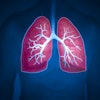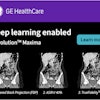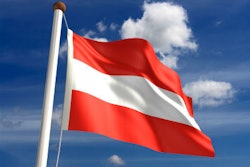Dual-energy CT (DECT)-based volumetric assessment is better than evaluating Hounsfield Unit (HU)-based values and cortical thickness ratio for predicting the two-year risk of fractures caused by osteoporosis, researchers have reported.
"[We found that] DECT-based bone mineral density values are highly valuable in identifying patients at risk for osteoporotic fractures," wrote a team led by Dr. Philipp Reschke, of the Hospital of the Goethe University in Frankfurt, Germany. The study findings were published on 7 August in Academic Radiology.
Osteoporotic bone fractures are common around the world, and their incidence is expected to increase as people live longer, the group explained. CT imaging is considered the gold standard for evaluating bone structures and fracture lines because of its high spatial resolution, and opportunistic CT exams offer a way to detect osteoporosis. There are other opportunistic methods for this assessment, such as measuring trabecular HU, cortical HU, and cortical thickness ratio, although these techniques are limited since they describe the quality of bone but not its density.
"Material differentiation in DECT can provide novel, relevant information for different musculoskeletal applications," the investigators wrote.
Reschke and colleagues compared the performance of DECT to trabecular HU, cortical HU, and cortical thickness ratio to predict future bone breaks in a study that included L1 vertebrae data from 111 patients who underwent DECT and HU and cortical thickness evaluation between January 2015 and December 2018. The investigators monitored study participants for two years after these baseline DECT scans to identify any incidence of bone breaks and used the area under the receiver-operating characteristic (AUROC) measure to evaluate the diagnostic accuracy of the two approaches.
Of the 111 patients, 55 experienced one or more fractures related to osteoporosis within two years of the DECT exam, with an average time to fracture of 72.6 days. Most fractures (87.7%) occurred in the vertebrae.
Reschke's group also found the following:
| Diagnostic accuracy for predicting bone fractures, area under the receiver operating curve (AUC) [with 1 as reference] | |
|---|---|
| Type of measure | AUC |
| DECT-based BMD | 0.95 |
| Trabecular HU | 0.81 |
| Cortical HU | 0.66 |
| Cortical thickness ratio | 0.53 |
The study suggests that DECT offers an effective way to predict a patient's future fracture risk, but the technique is somewhat limited in its availability, according to the researchers. They hope their findings will spark fresh motivation for making DECT more accessible and thus not only improve patients' quality of life but also curb downstream treatment costs.
"Given the substantial long-term healthcare costs of treating osteoporotic fractures … the ability of DECT-based BMD to lower these costs through early diagnosis and treatment suggests it could be a more cost-effective strategy overall," they concluded.
The complete article can be found here.




















